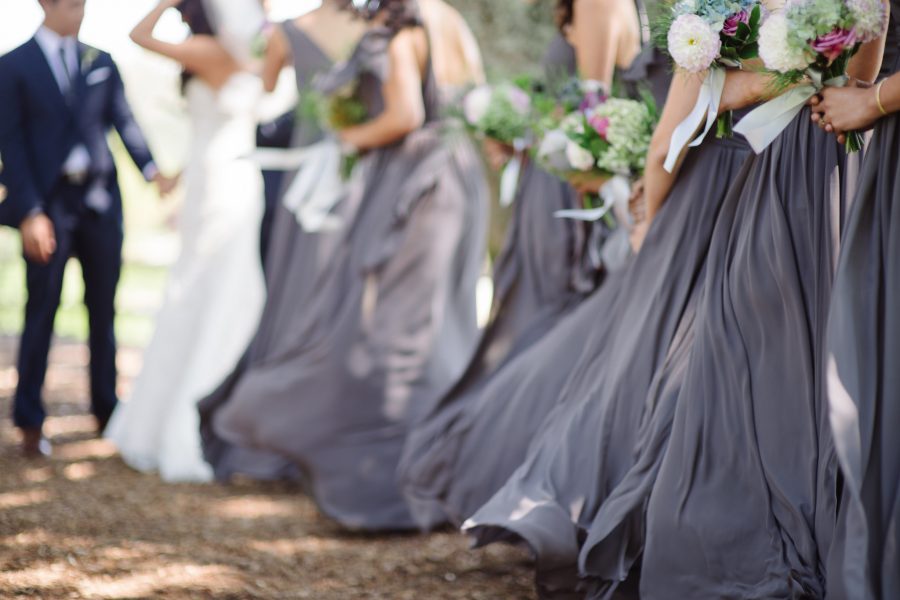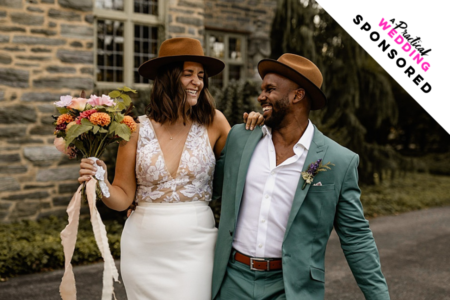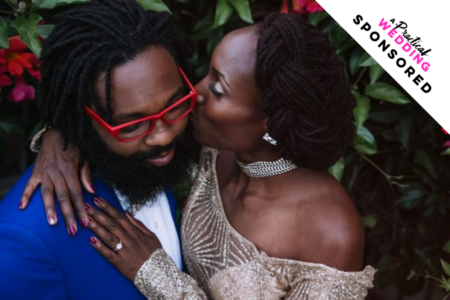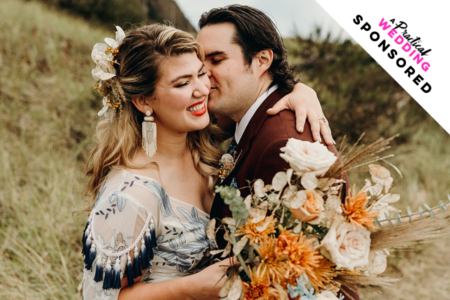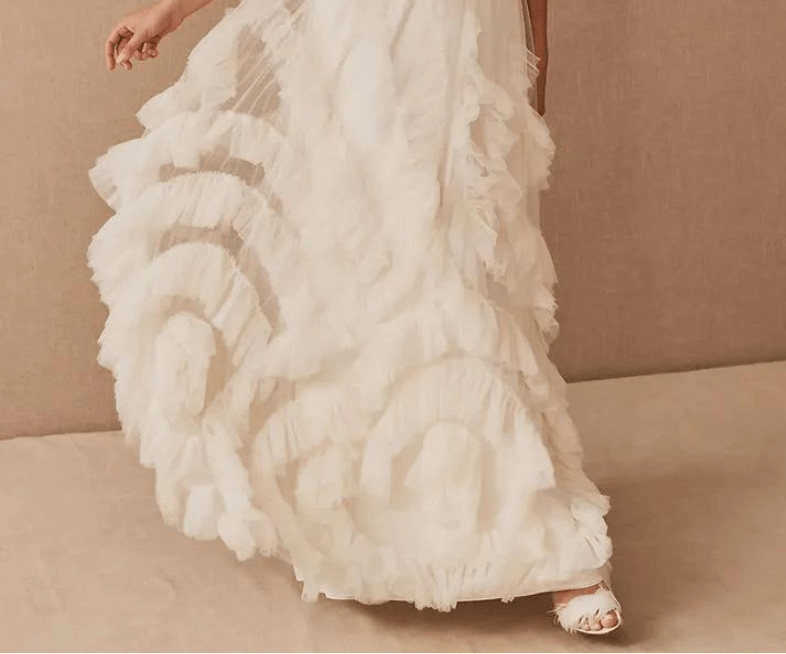Sitting down to write and work on your wedding ceremony can be overwhelming—it’s an empty document expectantly staring at you. You get that final university paper feeling with the cursor blinking in your face. You know there are a bunch of components in a wedding ceremony, but which ones should you include? And which ones do you need to include? I am certainly not the be-all, end-all; I tend to work with a lot of couples with small, short, non-traditional weddings, but I have written and worked on many wedding ceremonies. The first wedding I ever did, I certainly had that terrified-blank-document-where-to-begin feeling. But after a lot of practice, I am here, lovely readers, with some aid. What follows is how I help couples build their wedding ceremonies in four short steps (okay, one has a lot of parts).
How To Write A Wedding Ceremony
1. Find a style. Decide with your partner what sort of wedding ceremony you’d like to have: long, short, traditional, non-traditional, etc. Know that a twenty-minute ceremony is about the average length. Are you having a Jewish wedding ceremony (Meg wrote a great post about hers), a ceremony with Catholic touches, or a totally secular ceremony? Quaker wedding ceremonies offer silent reflection and a chance for everyone to speak. You could always go with the civil wedding ceremony option and say the legal bare minimum. Or do you want to go totally non-traditional and build your own format? Discuss as a team of two and try consider interested parties—do your or your partners’ parents want a certain religious or traditional aspect in your wedding ceremony? Are you willing to incorporate it? Talk to your partner about length of the ceremony and what style you’d like it to reflect.
2. Find a tone and a thesis. Just like those university papers, your wedding ceremony should have a thesis. A thesis makes the whole ceremony cohesive, and much easier to create. For example, is your message, “We took a journey together and this is the ultimate journey we start today,” or “Our love has been tested and today we reaffirm our connection,” or “Woohoo! FINALLY!” Is your tone nostalgic? Forward thinking? Is your wedding ceremony aimed toward the community of loved ones there to celebrate and witness your love, or it more about the team of two you’ve created with your partner? The thesis and tone will help you write vows, find readings, and help you and your officiant write an address for the wedding.
3. Decide which components of the ceremony you want to include. These are the wedding ceremony components in loosely the order people generally use, but there is no reason you cannot flip things around (and of course, cut things entirely). Remember, it’s your wedding—do what feels comfortable to you.
The Opening: A welcome, a please turn off your cellphones, a thank you to the guests for attending.
The Address: This is when a message is shared with your guests, a speech from the officiant, sometimes including readings. In a church wedding this would be when the minister gives a sermon. If the officiant is a friend or family member, you may want them to tell a personal story about you and your partner or explain how you met. You might want the officiant to share a reading or song lyric, proverb, or religious reading. Depending on your officiant they may or may not write the address—Priests and Rabbis usually do, friends and family might want to, or might want to write it with you.
The Readings: The readings really are exactly what they sound like. You may want someone to read a poem, lyrics, a Bible passage, or even a webcomic. Your officiant will introduce the reader, the reader will stand or come up to the ceremony, and then proceed with the reading.
The Expression of Intent: I am proceeding in caps because this is important: THIS IS THE ONLY PART OF THE WEDDING CEREMONY WHICH IS LEGALLY MANDATED. The expression of intent is when you and your partner are asked if you take this person to be your legally wedded partner, and you say, “I do,” or, “Hell yes!” or, “We do,” or “Yes, yes, a million times yes.” (A handfasting can legally take the place of the expression of intent.)
The Vows: There are options with the vows. Your vows, you read them. Or your own vows, the officiant reads them, and you repeat them. You write them, or you don’t. Or you don’t do personal vows at all. Either way, having the previously mentioned thesis makes it much easier to either stick with the general theme of the ceremony or cover something outside the theme that you want included.
The Ceremony of the Rings: The officiant speaks for a moment about the meaning of rings. It usually is along the lines of, “Rings are a circle which is eternal, as is love,” but varies with different religious and cultural contexts. Feel free to add to this explanation, or keep it super simple.
The Ring Vows: This is when you present your partner with their ring. I find that most couples want to repeat after me, as it’s hard to remember what you want to say when you’re up there getting married! And I have the extra advantage of an iPad to check my notes on. You’ll place the ring on your partner’s finger and say something to the effect of, “With this ring I thee wed.” Again, you can get as creative as you like with the words to choose to say before you place the ring.
The Pronouncement: Exactly what it sounds like, the officiant will pronounce you wed, married, husband and wife, wife and wife, husband and husband, zombie hunters for life…whatever you like.
The Kiss: The kiss! I love this part, it’s so happy.
I’d like to stress this point: you do not need all of the parts just listed. You should make your wedding feel just the way you want it to—like you, like tradition, or like some combination. If you want to move all the parts around, do it. If you want to flat out leave some parts out, feel free to do that too. (With the exception of the Expression of Intent.)
4. Make it you! I get a lot of insanely sweet questions from couples along the lines of: is it silly that we have a reading from Lord of the Rings in our wedding ceremony? Should we not mention zombies? Is it inappropriate to reference video games in our vows? To which my answer is always of course not. This is your wedding, it should sound and feel like you. I truly believe as long as you’re being kind and not making anyone uncomfortable there is nothing “inappropriate” for your wedding. Find touches that make it feel like your wedding ceremony. There are a lot of ways to add touches that will make the wedding feel tailored to your team of two: readings, and who reads them, a song sung by a friend, a blessing given by a family member, a tradition carried out by generations, or a tradition you’re starting that day. However you make the ceremony feel right, do that—this is your day, your ceremony, your wedding, and your marriage. Make it feel like you, however that works.

